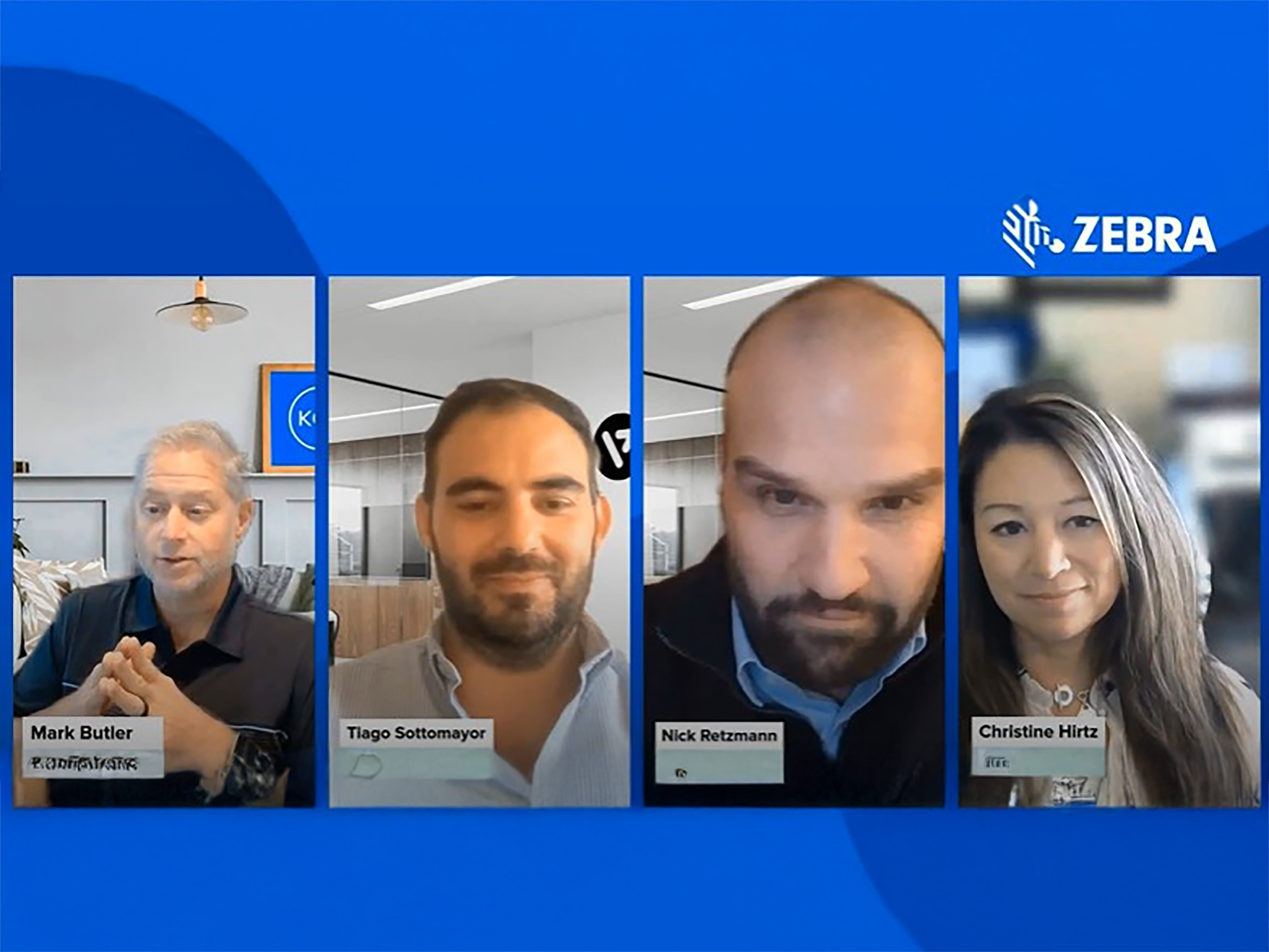Transform retail operations with Zebra’s retail technology solutions, featuring hardware and software for improving inventory management and empowering teams.
Streamline operations with Zebra’s grocery technology solutions, featuring hardware and software for improving retail shelf management, ordering and replenishment.
Enhance e-commerce operations with Zebra’s real-time inventory and automated workflows. Ensure accurate fulfillment, efficient returns, and seamless service.
Zebra’s technology solutions for department stores and specialty stores, feature hardware and software for retail management and workforce management.
Zebra’s omnichannel fulfillment technology solutions, feature hardware and software for timely order processing across channels and unified customer experience.
Zebra’s retail inventory management solutions, feature hardware, software and supplies for optimizing inventory management and demand forecasting.
Enhance transactions with Zebra’s POS technology solutions, featuring hardware, software and supplies for optimizing the checkout experience.
Zebra’s customer experience technology solutions, feature hardware and software for delivering personalized retail experiences and self-service capabilities.
Safeguard profits with Zebra’s retail loss prevention technology solutions, featuring hardware and software for enhancing security and product movement visibility.
Zebra’s associate engagement technology solutions, feature hardware and software for shift scheduling, task management, and team communications.
Streamline operations with Zebra’s healthcare technology solutions, featuring hardware and software to improve staff collaboration and optimize workflows.
Zebra’s hospital technology solutions, feature hardware and software for automating health system processes, reducing errors, and ensuring compliance.
Zebra’s patient registration technology solutions, featuring hardware, software, wristbands, and supplies improve patient identification for safer registration.
Optimize critical assets with Zebra’s healthcare asset tracking technology solutions, featuring hardware and software for ensuring equipment readiness.
Improve decision-making with Zebra’s Health Information Technology solutions, featuring hardware and software for enabling secure communication and data access.
Reduce lab errors with Zebra’s sample identification technology solutions, featuring hardware, software, labels, and supplies for accurate sample and specimen labeling.
Improve pharmacy workflows with Zebra’s pharmacy automation technology solutions, featuring hardware, software, labels, and supplies to reduce medication errors.
Zebra’s point-of-care solutions, feature hardware, software, and supplies for mobile access to critical information, patient ID, specimen collection and labeling.
Enhance processes with Zebra’s manufacturing technology solutions, featuring hardware and software for automation, data analysis, and factory connectivity.
Streamline operations with Zebra’s automotive manufacturing technology solutions, featuring hardware and software for reducing downtime and improving processes.
Optimize processes, assembly and supply chain efficiency with Zebra’s electronics manufacturing technology solutions, featuring hardware and software.
Boost production with Zebra’s food and beverage manufacturing technology solutions, featuring hardware and software for compliance and quality monitoring.
Achieve excellence with proactive quality management. Use Zebra’s solutions for precise root cause analysis and quality assurance.
Achieve seamless production with Zebra’s manufacturing WIP solutions, featuring hardware and software for tracking products and spotting bottlenecks early.
Ensure efficiency with Zebra’s material handling technology solutions, featuring hardware and software for automating systems to prevent delays.
Optimize operations and gain inventory and shipment data with Zebra’s supply chain visibility technology solutions, featuring hardware and software.
Boost performance with smart digital solutions. Equip your team with Zebra’s AI-powered tools for real-time guidance and efficient workflows.
Drive efficiency with Zebra’s unified communications solutions, featuring hardware and software for connecting teams for seamless operations.
Achieve excellence with Zebra’s proactive quality management solutions, featuring hardware and software for supporting root cause analysis and assurance.
Gain transparency with Zebra’s manufacturing traceability solutions, featuring hardware and software for tracking products for compliance and quality control.
Prevent downtime with Zebra’s manufacturing asset tracking solutions, featuring hardware and software for efficiently locating equipment and materials.
Zebra’s transportation and logistics technology solutions feature hardware and software for enhancing route planning, visibility, and automating processes.
Protect products with Zebra’s cold chain logistics technology solutions, featuring hardware and software for accurate tracking, monitoring and data logging.
Enhance operations with Zebra’s post and courier technology solutions, featuring hardware and software for package tracking, proof of delivery, and more.
Zebra’s warehousing and distribution technology solutions, feature hardware and software for inventory tracking, order fulfillment, and warehouse automation.
Ensure accuracy with Zebra’s proof of delivery technology solutions, featuring hardware and software for capturing delivery data efficiently.
Improve efficiency with Zebra’s cross docking technology solutions, featuring hardware and software for real-time tracking and automating scanning and labeling.
Zebra’s order processing technology solutions, feature hardware and software for shipping optimization, order tracking, data analysis and better inventory control.
Zebra’s warehouse inventory management solutions, feature hardware and software for inventory tracking, space utilization, and data-driven insights.
Zebra’s inbound logistics technology solutions, feature hardware and software for inventory management, order fulfillment, and better visibility of shipments.
Zebra’s reverse logistics technology solutions, featuring hardware and software for better visibility and streamlining receiving, sorting, and managing returns.
Enhance deliveries with Zebra’s outbound logistics technology solutions, featuring hardware and software for ensuring timely, precise shipments.
Zebra’s warehouse asset management technology solutions, featuring hardware and software for improved visibility and control of asset movements.
Learn how Zebra's public sector technology solutions empower state and local governments to improve efficiency with asset tracking and data capture devices.
Zebra’s printing, scanning and tracking technologies for public sector healthcare help ensure delivery of the best possible care for optimal health outcomes.
Zebra’s law enforcement and first responder technologies – scanners, tablets and mobile computers – give you real-time, accurate situational awareness.
Zebra’s asset tracking and data capture technologies empower federal civilian agencies to operate more efficiently and effectively.
Zebra’s printing, scanning and mobile computer technology gives state and local government agencies the tools to provide services quickly and efficiently, making the best use of resources.
Zebra’s military and Department of Defense (DoD) barcode printing and asset tracking technologies increase visibility into assets, personnel and equipment, for faster, more efficient and secure operations.
Create a safe and secure environment on campus with Zebra’s ID printing and tracking solutions.
With Zebra's law enforcement technology solutions, you can answer the call of duty with greater confidence. Spend more time protecting the public and less time doing paperwork.
Track your teams, equipment and vitals, so you're better prepared, better protected and better informed at the fire station and at the scene.
Let Zebra show you how our transformative emergency response technology can be your best ally in serving the public.
Zebra’s asset management devices for local and federal government enable agencies to track and manage total asset inventories.
Zebra’s identity management technologies for government include secure ID card printing, mobile fingerprint collection, document scanning, CAC card verification, personnel validation and more.
Zebra’s inspection and code enforcement technology provides fast accurate options for ensuring compliance.
Zebra’s disaster and emergency management mobile technologies allow for real-time communication for onsite assessment, asset tracking and identification, and inventory control.
Zebra’s mobile logistics solutions for military supply chains keep operations moving smoothly around the clock.
Manage the inventory of your military commissary and exchange service with Zebra’s practical and rugged inventory management printers and scanners.
Zebra’s MRO solutions enable personnel to access work orders and maintenance histories, track parts and inventories, and complete necessary documents.
Deliver the right human services, when and where they’re needed, quickly, efficiently and accurately.
Zebra’s electronic citation (E-citation) solutions provide enforcement officers with fast, accurate options for electronic ticketing.
Zebra’s ID card printers and scanners allow for high volume license printing and processing of drivers, marriage, insurance and wildlife licenses.
Zebra’s Communications & Collaboration solutions enable a safer, more informed field workforce, for both routine operations and emergency response.
Zebra’s situational awareness solutions for public safety include an array of purpose-built mobile computers, rugged tablets, visibility and support services enable a fully customized solution for your agency’s needs.
Zebra's hospitality technology solutions equip your hotel and restaurant staff to deliver superior customer and guest service through inventory tracking and more.
With Zebra's Hospitality Communication Solutions, you can enable real-time communications for your hospitality staff with mobile computers and smartphone devices.
Zebra's card printing solutions allows for fast, on-demand printing of room access keys, VIP badges, loyalty, membership and gift cards
Keep track and stay prepared by monitoring and tracking inventory and asset locations with Zebra's restaurant and hotel inventory management solutions.
Zebra provides food label solutions for restaurants, hotels and more. Our labels meet local regulations for direct and indirect food contact.
Zebra's restaurant mobile POS and ordering devices can increase your restaurant sales, enhance server productivity, and increase guest satisfaction.
Zebra's food safety hardware and software keep your guests safe and enable you to automate food safety procedures, reducing the odds of spreading food-borne illness.
Zebra's QSR software can enable you to increase inventory counts, scan guest loyalty apps, decrease wait times and increase customer satisfaction.
Zebra's market-leading solutions and products improve customer satisfaction with a lower cost per interaction by keeping service representatives connected with colleagues, customers, management and the tools they use to satisfy customers across the supply chain.
Enable field workers to perform pre-sales, sales, route accounting activities and more effectively interact with customers.
Instant access to technical specs and inventory helps improve customer satisfaction.
Mobile computers and printers ensure accurate chain of custody handoff during pick-up and delivery.
Empower your field workers with purpose-driven mobile technology solutions to help them capture and share critical data in any environment.
Zebra's mobile computing portfolio is designed to help utility companies improvement the management and lifecycle of their assets.
Zebra's mobile devices enable your entire staff, from call center representatives to field technicians, to deliver enhanced customer service through the use of mobile technology.
Zebra's rugged mobile technology solutions provide the field dispatch and routing tools needed to accelerate in-field operations. Learn More.
From first call through incident investigation, Zebra ruggedized mobile solutions enable emergency response personnel to serve public safety and utilities industries more effectively with industry-leading mobility strategies.
Zebra's rugged mobile devices provide your field teams and contractors with complete situational awareness to meet customer service needs.
Zebra's mobile computing solutions provide utilities companies with the tools needed for advanced GIS asset mapping of in-field infrastructure.
Zebra's mobile computing portfolio features tools to help you upgrade processes such as digitizing record inspections to speed up efficiencies. Learn More.
Zebra's mobile computing solutions specialize in the real-time, data-powered mobile workflows to help utility companies with inventory management. Learn more.
Zebra's rugged HazLoc mobile devices help optimize your critical operations with safety as a top priority. Learn More.
Zebras field-certified rugged mobile devices connect oil and gas field workers to real-time critical data. Learn More.
Zebra's mobile technology solutions enable your operators to get real-time remote asset monitoring across your operations. Learn More.
Zebra's rugged mobile computing solutions enable your staff to plan, schedule and complete maintenance and repairs in any environment. Learn More.
Drive successful telecom management with mobile devices designed to meet the demands of public safety and customer service.
Zebra's data-powered mobile technology solutions help you to generate efficiencies across your field service operation in the water industry. Learn More.
Zebra's mobile work order management technology allows you to leverage your existing systems to your operations perform at their very best. Learn More.
Zebra's range of Banking technology solutions enables banks to minimize costs and to increase revenue throughout their branch network. Learn more.
Zebra's range of mobile computers equip your workforce with the devices they need from handhelds and tablets to wearables and vehicle-mounted computers.
Zebra's desktop, mobile, industrial, and portable printers for barcode labels, receipts, RFID tags and cards give you smarter ways to track and manage assets.
Zebra's 1D and 2D corded and cordless barcode scanners anticipate any scanning challenge in a variety of environments, whether retail, healthcare, T&L or manufacturing.
Zebra's extensive range of RAIN RFID readers, antennas, and printers give you consistent and accurate tracking.
Choose Zebra's reliable barcode, RFID and card supplies carefully selected to ensure high performance, print quality, durability and readability.
Zebra's location technologies provide real-time tracking for your organization to better manage and optimize your critical assets and create more efficient workflows.
Zebra's rugged tablets and 2-in-1 laptops are thin and lightweight, yet rugged to work wherever you do on familiar and easy-to-use Windows or Android OS.
With Zebra's family of fixed industrial scanners and machine vision technologies, you can tailor your solutions to your environment and applications.
Zebra’s line of kiosks can meet any self-service or digital signage need, from checking prices and stock on an in-aisle store kiosk to fully-featured kiosks that can be deployed on the wall, counter, desktop or floor in a retail store, hotel, airport check-in gate, physician’s office, local government office and more.
Discover Zebra’s range of accessories from chargers, communication cables to cases to help you customize your mobile device for optimal efficiency.
Zebra's environmental sensors monitor temperature-sensitive products, offering data insights on environmental conditions across industry applications.
Enhance frontline operations with Zebra’s AI software solutions, which optimize workflows, streamline processes, and simplify tasks for improved business outcomes.
Keep labor costs low, your talent happy and your organization compliant. Create an agile operation that can navigate unexpected schedule changes and customer demand to drive sales, satisfy customers and improve your bottom line.
Empower the front line with prioritized task notification and enhanced communication capabilities for easier collaboration and more efficient task execution.
Get full visibility of your inventory and automatically pinpoint leaks across all channels.
Reduce uncertainty when you anticipate market volatility. Predict, plan and stay agile to align inventory with shifting demand.
Drive down costs while driving up employee, security, and network performance with software designed to enhance Zebra's wireless infrastructure and mobile solutions.
Explore Zebra’s printer software to integrate, manage and monitor printers easily, maximizing IT resources and minimizing down time.
Make the most of every stage of your scanning journey from deployment to optimization. Zebra's barcode scanner software lets you keep devices current and adapt them to your business needs for a stronger ROI across the full lifecycle.
RFID development, demonstration and production software and utilities help you build and manage your RFID deployments more efficiently.
RFID development, demonstration and production software and utilities help you build and manage your RFID deployments more efficiently.
Zebra DNA is the industry’s broadest suite of enterprise software that delivers an ideal experience for all during the entire lifetime of every Zebra device.
Advance your digital transformation and execute your strategic plans with the help of the right location and tracking technology.
Boost warehouse and manufacturing operations with Symmetry, an AMR software for fleet management of Autonomous Mobile Robots and streamlined automation workflows.
The Zebra Aurora suite of machine vision software enables users to solve their track-and-trace, vision inspection and industrial automation needs.
Zebra Aurora Focus brings a new level of simplicity to controlling enterprise-wide manufacturing and logistics automation solutions. With this powerful interface, it’s easy to set up, deploy and run Zebra’s Fixed Industrial Scanners and Machine Vision Smart Cameras, eliminating the need for different tools and reducing training and deployment time.
Aurora Imaging Library™, formerly Matrox Imaging Library, machine-vision software development kit (SDK) has a deep collection of tools for image capture, processing, analysis, annotation, display, and archiving. Code-level customization starts here.
Aurora Design Assistant™, formerly Matrox Design Assistant, integrated development environment (IDE) is a flowchart-based platform for building machine vision applications, with templates to speed up development and bring solutions online quicker.
Designed for experienced programmers proficient in vision applications, Aurora Vision Library provides the same sophisticated functionality as our Aurora Vision Studio software but presented in programming language.
Aurora Vision Studio, an image processing software for machine & computer vision engineers, allows quick creation, integration & monitoring of powerful OEM vision applications.
Adding innovative tech is critical to your success, but it can be complex and disruptive. Professional Services help you accelerate adoption, and maximize productivity without affecting your workflows, business processes and finances.
Zebra's Managed Service delivers worry-free device management to ensure ultimate uptime for your Zebra Mobile Computers and Printers via dedicated experts.
Find ways you can contact Zebra Technologies’ Support, including Email and Chat, ask a technical question or initiate a Repair Request.
Zebra's Circular Economy Program helps you manage today’s challenges and plan for tomorrow with smart solutions that are good for your budget and the environment.
The Zebra Knowledge Center provides learning expertise that can be tailored to meet the specific needs of your environment.
Zebra has a wide variety of courses to train you and your staff, ranging from scheduled sessions to remote offerings as well as custom tailored to your specific needs.
Build your reputation with Zebra's certification offerings. Zebra offers a variety of options that can help you progress your career path forward.
Build your reputation with Zebra's certification offerings. Zebra offers a variety of options that can help you progress your career path forward.
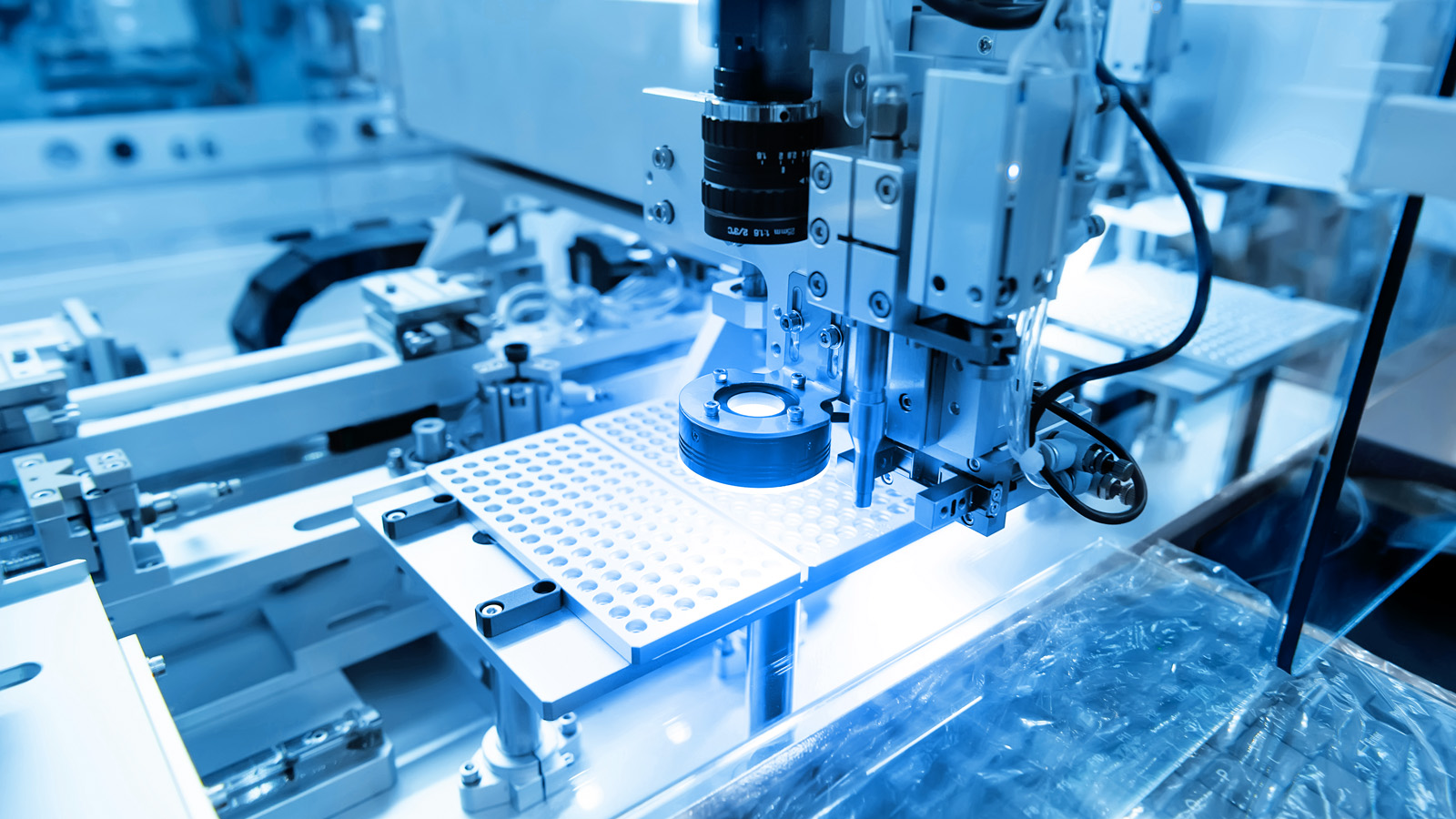
What to Know Before You Try to Train (and Test) a Deep Learning Application
AI must fail over and over to succeed. But there are several mistakes you want to avoid making when teaching an AI-driven application how to look for anomalies on a product, component, or label.
If you read my colleague Jim Witherspoon’s primer on deep learning optical character recognition (OCR), then you heard that the way deep learning works isn’t much different than a human’s learning process.
Like your brain, deep learning tools utilize a mesh of artificial neural networks that requires training to become ‘more intelligent’. The main difference is that, unlike artificial intelligence (AI), your brain’s neural networks have been learning for years – you’ve literally been training them on hundreds of thousands of images every single day without even noticing it. That’s why your brain can easily ‘spot the difference’ between two pictures fairly quickly if asked, even if you don’t know what the object you’re looking at really is.
However, an AI-driven application – once trained properly – will spot the differences much faster. Of course, there are still some limitations to this technology. But compared to a few years back, deep learning models do not require as much data as before to become reliable. Moreover, if something runs too slow, you can always upgrade your PC hardware to train and execute the deep learning models faster. That’s a huge advantage, seeing that we cannot (yet) upgrade the human brain comparably. That’s why AI, machine learning, and deep learning are so exciting. If trained properly, this technology can do what we do and help us solve different problems, but so much faster and with more accuracy.
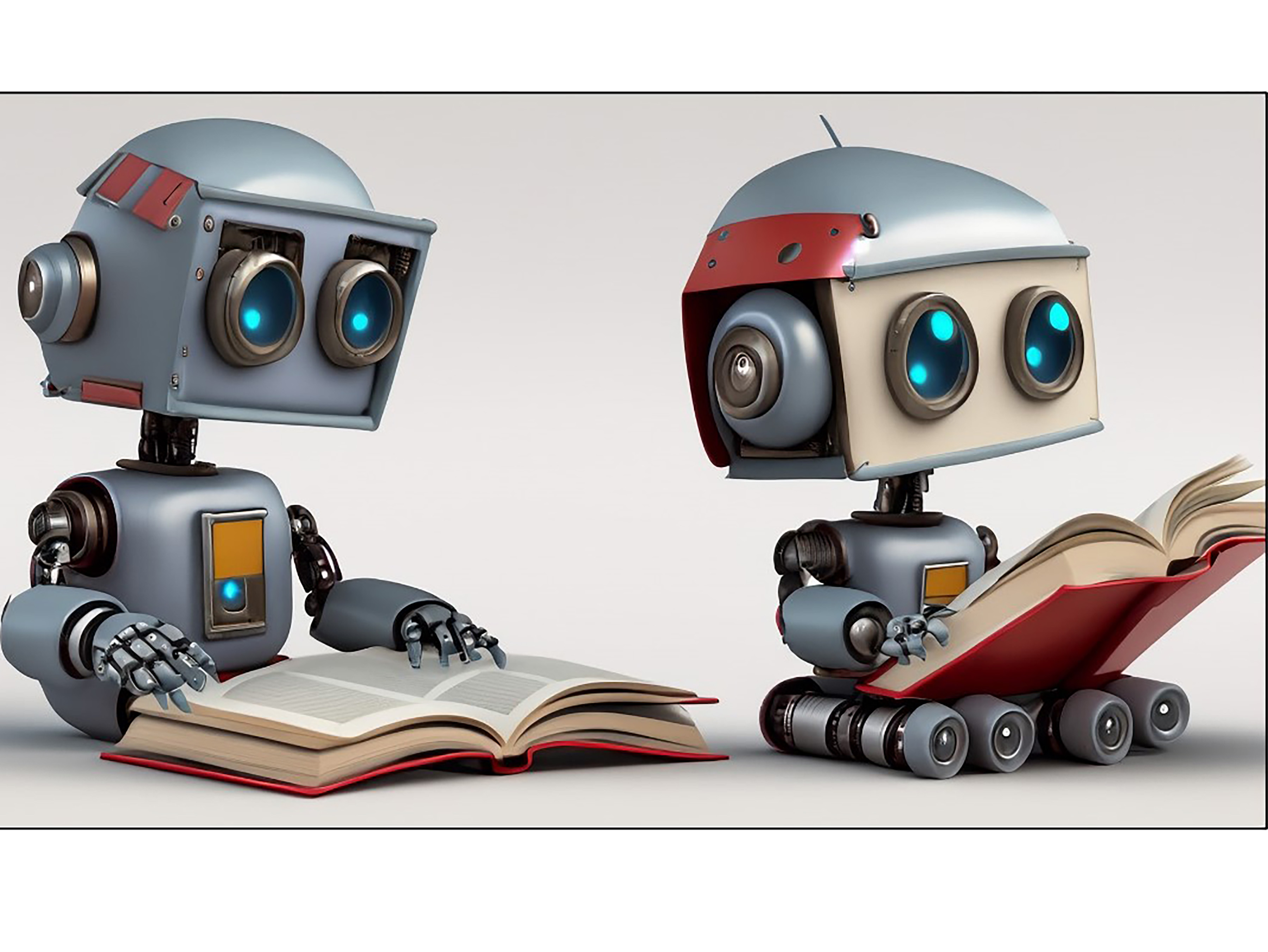
Proper training is key for a successful deep learning application, though. I can’t stress it more that if you don’t use the right tactics to teach the AI the difference between ‘right and wrong’, it will fail to grasp the concepts you’re trying to instill. (Just like a person.)
So, I thought I could share the things my colleagues and I have seen people of all experience and skill levels get wrong when trying to train or test a deep learning application in real-world scenarios like production, fulfillment, sorting, packing, and quality control. Of course, I also want to talk about the right way to train a deep learning model and, subsequently, evaluate the effectiveness of that training. However, before we get to that, let’s focus on the basics and discuss what you need to effectively train your deep learning model.
Step One: Prepare your Datasets (and Know What Kind of Data to Use for ‘Training’ vs. ‘Test’)
You can’t train a deep learning model if you aren’t using the right type of data for training, and I often see people trying to use the same datasets for training and testing purposes, which is a problem.
For a deep learning model to work effectively, it has to be exposed to a set of data in order to learn what we require from it. The set of training data used during the training process is called the ‘training dataset’ whereas another, completely different set, used to test the model is called the ‘test dataset’. There may also be a ‘validation dataset’ sometimes, which is used during the training for validation but not for training. But to keep things simple, let’s just stick to ‘training’ and ‘test’ datasets for now.
If we compare an AI-driven application to a high-school student, we could say that the training dataset is like all the learning materials used in class (where each image would be equal to one book or article approaching the same topic from a slightly different angle) and the test dataset is like the end-of-term exam, during which we test if the student has learned all the knowledge and can put it into practice to solve the problems at hand.
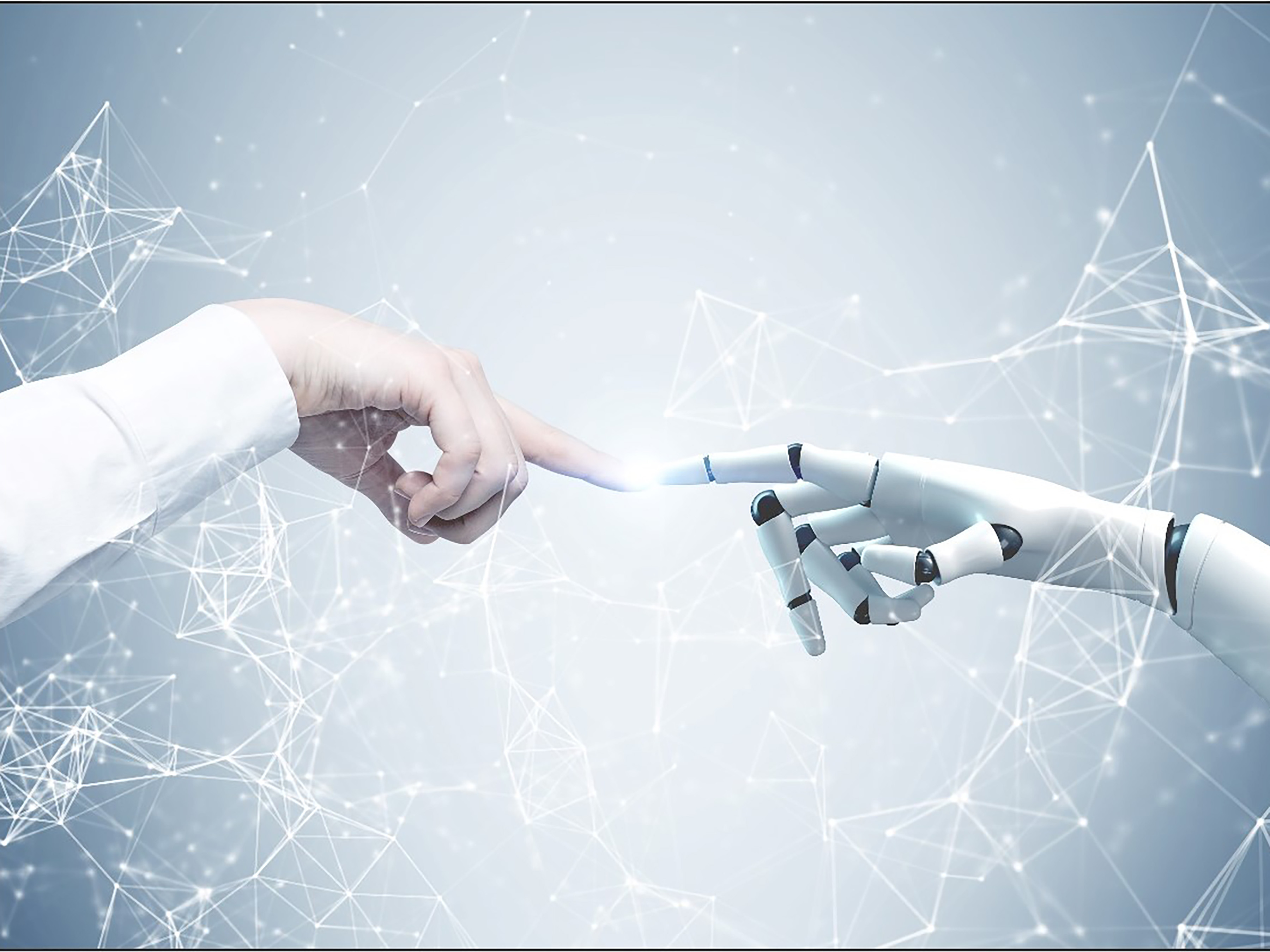
The first golden rule when preparing your datasets is NEVER TO MIX training and test datasets. The reason behind this is very simple: If you’re testing a deep learning model using the exact same dataset it has already seen during the training, how can you be sure if it can apply what it has learned in a completely new situation (for example when analyzing new images)? Well… you can’t. And, more often than not, it won’t be able to. You can’t test the model using training images for the very same reason teachers don’t give their students the test questions ahead of time. They want to see if they can apply the lessons taught in class to other situations – they want to see what they derived and retained from their training.
Another rule is that you need diversity in your images. Your deep learning model, in order to learn effectively, needs to be fed with many variations of the same feature. Let’s say that you want to analyze defects on a bolt’s thread. You can’t just take one bolt with a defective thread and take, let’s say, 20 or 50 images of the same item, just with some minor changes to the illumination or the orientation angle. That is cheating – and forbidden. The deep learning model needs to be able to recognize many different anomalies, which may include the wrong part or component coming down the line. So, whenever you are training a deep learning model, you must prepare a training dataset (e.g. images) of 20-50 different – I mean truly different – objects. In your case, this would mean 20-50 bolts with similar but different defects of the thread.
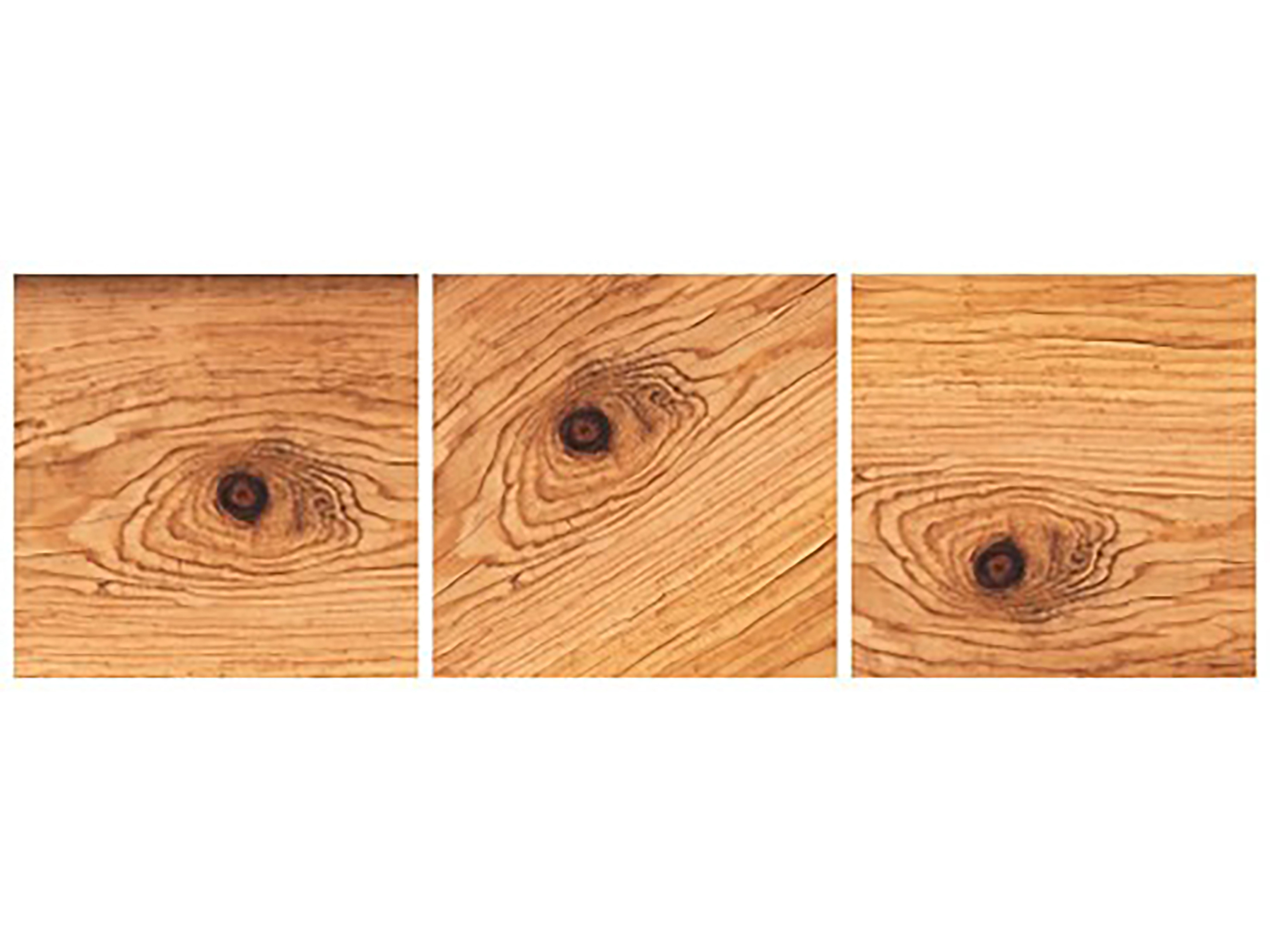
Caption: An example of a bad training dataset. The same defect (wood knot) was captured a couple of time, with only its rotation or positioning slightly changed. To teach a deep learning model to identify such defect, training dataset must include images of many different types of wood knots.
The last rule is: Don’t try to train on defects located at the edge of the image. This is a tricky problem for deep learning models because the accuracy of neural networks is usually lower at the edges due to the smaller context. Although people can still see things quite well at the edge of an image (or at least they think they can), it is recommended that the field of view in real applications assures some margin around objects under inspection.
So, to sum things up, in order to effectively train a deep learning model, you have to:
- Prepare two different datasets, one for training and training only and another one for testing your model.
Make sure that the training dataset does not contain any data (e.g. images) which is preset in the test dataset.
Prepare a varied training and test dataset containing truly different objects (e.g. different pieces of the same product) with the same type of feature (e.g. defect) which you want to teach the model to recognize.
Don’t use images where defects are located at the edges of the image for training.
You must also get your annotations right – and know when it’s best not to annotate something.
The Art of Annotation
There are many types of deep learning tools. Some can be trained in an unsupervised mode (e.g. anomaly detection) in which you just provide the network with a set of images without marking anything on them, whereas other tools require some sort of annotation to teach the neural network what you want it to look for. In a case where annotations are required, you need to remember that the annotations you make on your training dataset will influence the AI’s ability to learn (and retain) the right lesson.
The golden rule here is simple – do not mix your annotations. If you mark one defect type on some images in the dataset and another defect type on other images and then submit all of them as the same training data set, it will essentially teach the AI a very bad habit. The neural network does not extrapolate from examples. It looks at the markings on the image, and those markings must be very precise so the AI can be taught with very clear training patterns.
Let’s say you want to detect scratches on a plastic surface, but some samples also have chipped-off corners. You must either mark the scratches, leaving the damaged corners without any annotations (and thus not teaching the AI that this is some sort of defect) OR train a model that can recognize two different classes of defects: scratches and damaged corners. In the second scenario, you must mark all the scratches as Defect One and all chipped corners as Defect Two. This way, the deep learning model, if trained properly, will learn to recognize both defects and will be able to differentiate between them. However, it will never work if you just mark all the different defects within the image as one class and then use these images for training.
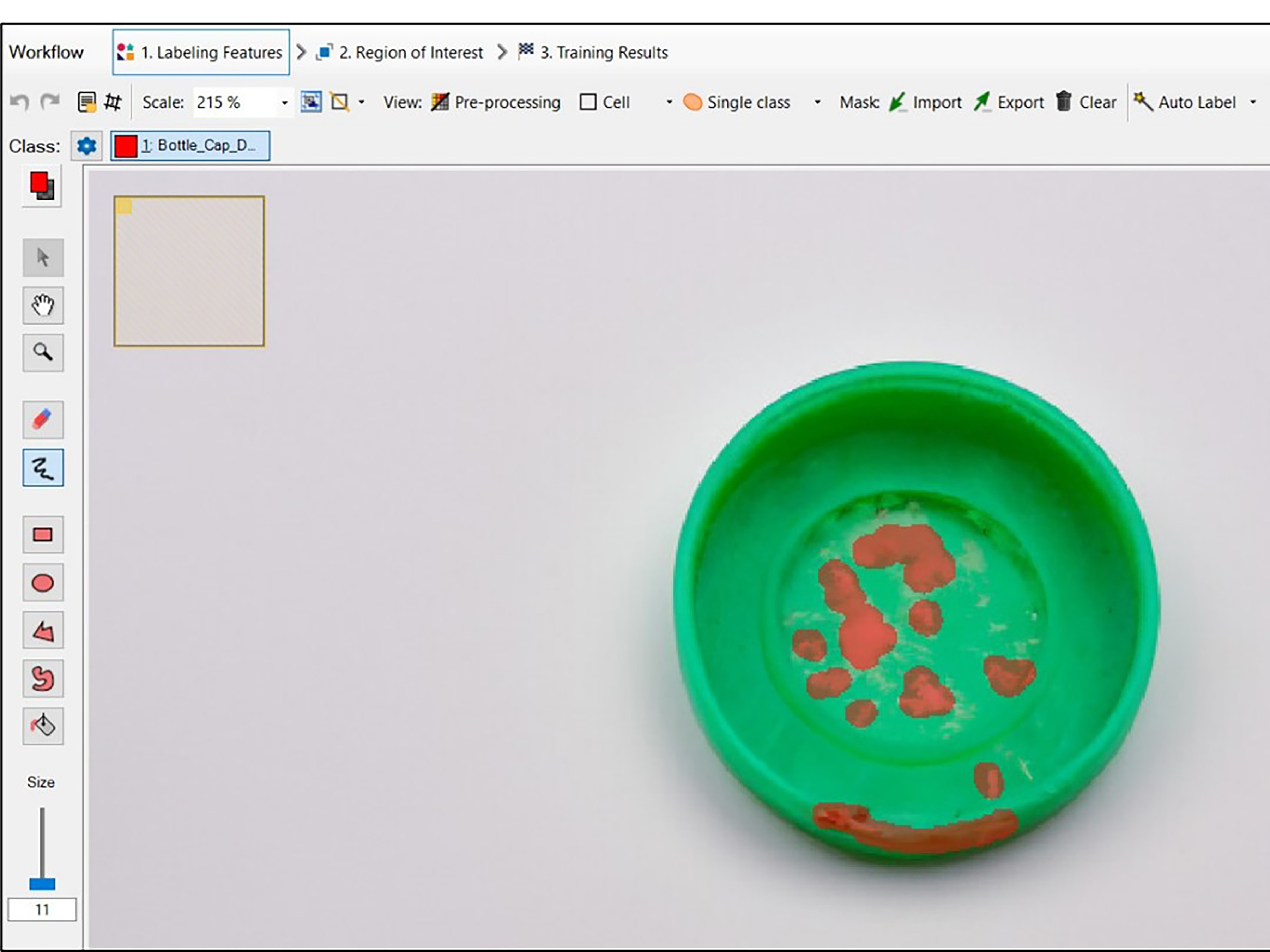
Caption: An example of an incorrect defect annotation. There are clearly two defects on the cap, which are not separated into two different classes but instead marked as one defect.
Contrary to our brain, deep learning models are not able to recognize ‘a defect’ in its general sense. We humans can do that because, as mentioned before, we’ve been teaching our brains to spot things every single day for years. Deep learning models can, however, identify defects like scratches or chipped-off elements perfectly and much faster than us providing that we teach them this ‘skill’ properly.
There are, of course, exceptions to this rule (e.g. anomaly detection where you can teach the model using good samples and the model will detect any deviations from the learned pattern). But if your model is trained in a supervised mode to recognize a particular thing, then you need to make sure that you feed it the right data and get your annotations right.
So, are there any rules or tricks here?
Of course there are:
Use the right annotation tools that can help you tackle the problem at hand. In some cases, using the brush tool is best; in other scenarios, a bounding box is more convenient and appropriate. For example, if you want the deep learning model to detect bananas, and you create oriented bounding boxes, remember that the two ends of a banana are different. So, you must account for the potential 180-degree rotation. If you want it to detect oranges, though, you must change the way you mark the image. Oranges do not have orientation, so a non-rotating bounding box is more appropriate. Scratches or small defects like chips will work best with free-hand style annotation tools, like the brush.
Keep your images clean and, whatever you do, please do not mark up images with arrows or circles to show the location of defects. Such samples have zero value for training (or testing) as the neural network will see the markings and will make judgments using them. Don’t think about artificially removing these parts in Photoshop, either. The neural network will detect this too. If someone sends you images with defect markings, the best thing you can do is to ask for clean images that can be used during training.
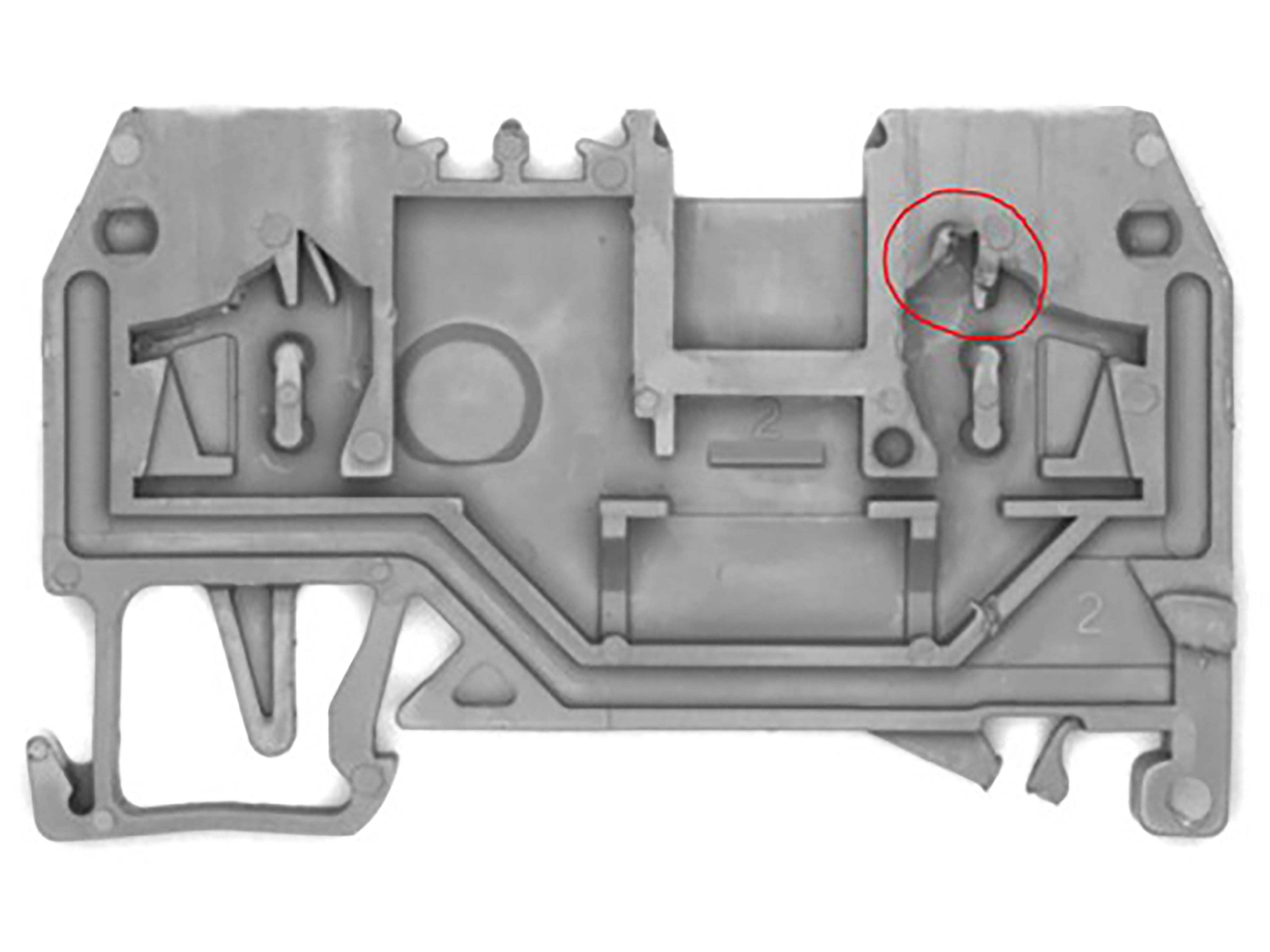
Caption: An image with a defect marking
If you are prepping your datasets for training and want a second opinion on their quality or you’re experiencing some issues during training and need assistance, feel free to contact our Zebra Aurora Vision Support Team at avdlsupport@zebra.com.
And if you want to find out what we’ve learned about testing a deep learning application, stay tuned to the blog because I’ll share best practices and common mistakes in my next post.
###
Related Resources
- A Deeper Dive on Deep Learning OCR
- Deep Learning Isn’t a “Bleeding Edge” Technology, but It Can Help Stop the Bleed at the Edge of Your Business. Here’s How.
- Ask the Expert: Is There a Difference Between Machine Learning and Deep Learning?
Zebra Developer Blog
Zebra Developer Blog
Are you a Zebra Developer? Find more technical discussions on our Developer Portal blog.
Zebra Story Hub
Zebra Story Hub
Looking for more expert insights? Visit the Zebra Story Hub for more interviews, news, and industry trend analysis.
Search the Blog
Search the Blog
Use the below link to search all of our blog posts.
Most Recent
Legal Terms of Use Privacy Policy Supply Chain Transparency
ZEBRA and the stylized Zebra head are trademarks of Zebra Technologies Corp., registered in many jurisdictions worldwide. All other trademarks are the property of their respective owners. ©2025 Zebra Technologies Corp. and/or its affiliates.

